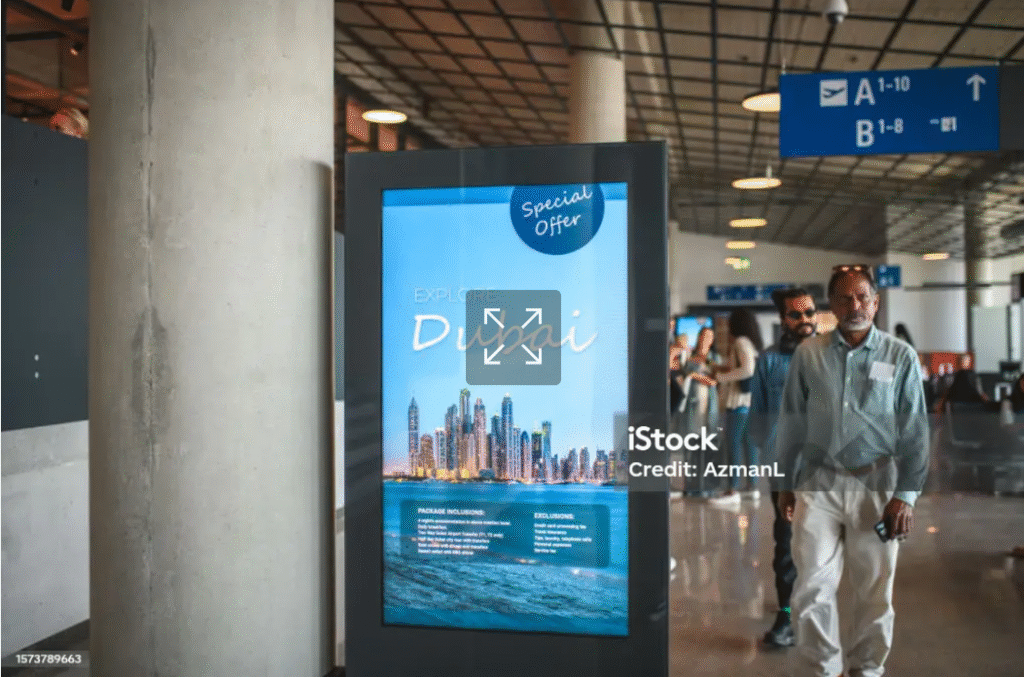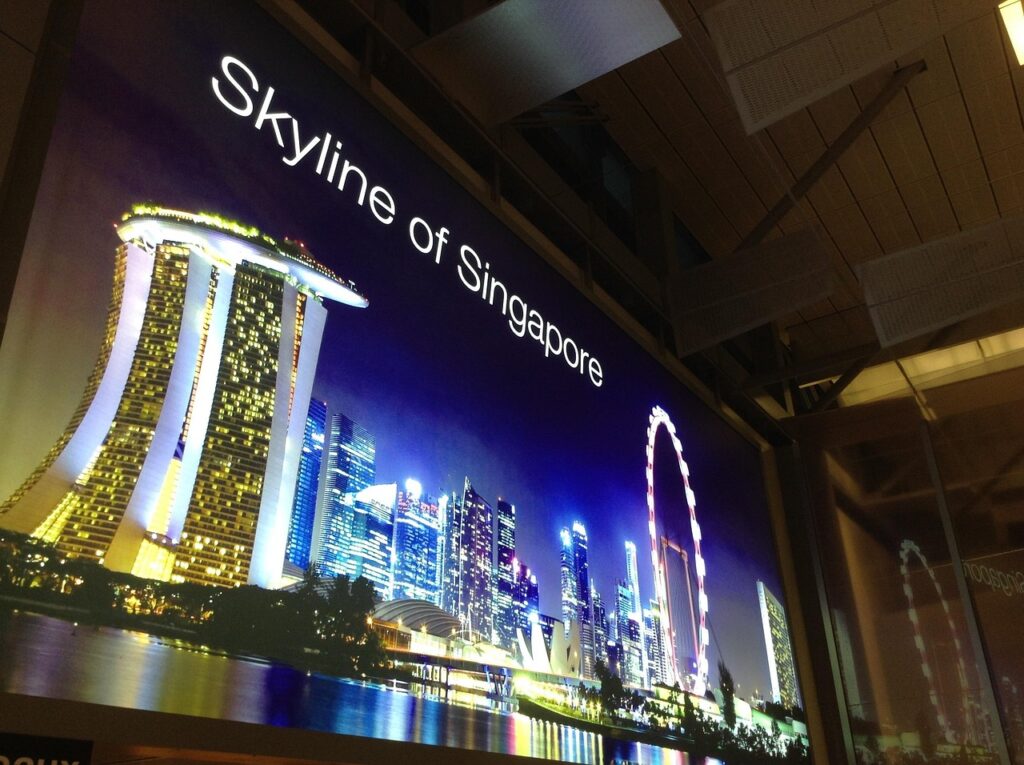
Introduction
Billboard advertising has long been one of the most powerful tools for building brand visibility and recognition. In bustling markets like Nigeria, where thousands of commuters and pedestrians encounter outdoor ads daily, the size of a billboard is more than a design choice—it’s a strategic decision. Selecting the right size can influence how many people see your message, how clearly they understand it, and how effectively they remember your brand.
From large-format billboards towering over highways to smaller street-level signs targeting local communities, mastering billboard advertising size is key to maximizing impact. In this blog, we’ll explore essential insights and strategies for choosing the right billboard size, design practices, and placement to ensure your campaigns deliver measurable results.
1. Why Billboard Size Matters

The size of a billboard determines:
- Visibility: Larger billboards can be seen from farther distances.
- Readability: The bigger the space, the more room for bold, legible text and striking visuals.
- Target Audience: High-traffic highways may demand giant boards, while smaller communities may be better served with compact options.
For example, in Lagos, a massive 96-sheet billboard along Third Mainland Bridge will capture thousands of daily impressions, while a smaller 12-sheet poster near a bus stop can effectively engage pedestrians and local shoppers.
2. Common Billboard Sizes in Nigeria
Different billboard formats exist, and agencies typically recommend one based on campaign goals. Here are the most common sizes:
- 48-Sheet Billboard (Standard Large Billboard):
Widely used across highways and busy streets. Ideal for reaching mass audiences. - 96-Sheet Billboard (Super-Sized Billboard):
Twice the size of a 48-sheet. Highly impactful, often placed at major highways, airports, and landmark areas. - 12-Sheet Billboard (Street-Level Poster):
Smaller, often positioned in neighborhoods and city centers. Great for local targeting. - Unipole Billboards:
Tall single-pole structures with large faces, ensuring visibility over long distances. - Digital Billboards:
Vary in size but often follow large formats, offering flexibility for dynamic content.
Understanding these categories helps businesses align their advertising budget with the scale of their target audience.
3. Choosing the Right Billboard Size for Your Brand
The right size depends on three critical factors:
- Target Audience Location:
- High-income brands may go for larger billboards in premium locations.
- Local shops or SMEs may prefer cost-effective smaller boards near their business area.
- High-income brands may go for larger billboards in premium locations.
- Campaign Objective:
- Awareness campaigns = Bigger formats for mass visibility.
- Directional ads = Smaller boards guiding people to a nearby location.
- Awareness campaigns = Bigger formats for mass visibility.
- Budget:
- Larger billboards come with higher costs in terms of space rental, printing, and regulatory permits.
- Smaller boards allow brands to diversify and place multiple units across different neighborhoods.
- Larger billboards come with higher costs in terms of space rental, printing, and regulatory permits.
4. Design Principles Based on Billboard Size
Designing for billboards isn’t one-size-fits-all. The size dictates how creative messages should be structured.
- Large Billboards (48–96 sheets):
- Use bold, striking visuals.
- Keep text minimal—no more than 7 words.
- Ensure colors contrast well against the background.
- Use bold, striking visuals.
- Medium to Small Billboards (12 sheets):
- Focus on local relevance.
- Add directional cues like “200m ahead.”
- Simpler images work best for close-up views.
- Focus on local relevance.
- Digital Billboards:
- Use animations and rotating messages.
- Adapt designs for both daytime and nighttime visibility.
- Use animations and rotating messages.
5. Billboard Placement and Size Strategy
Even the largest billboard won’t work if placed in the wrong location. Placement and size must go hand in hand.
- Highways:
Large billboards (48–96 sheets) work best due to fast-moving traffic. - City Centers:
Medium-sized boards dominate, as pedestrians and slow-moving cars allow for better engagement. - Local Communities:
Smaller 12-sheet posters can be strategically placed for repeated visibility. - Transport Routes:
Unipoles and digital boards near bus stops and airports target mass transit users effectively.
6. Cost Considerations of Billboard Size
Billboard pricing in Nigeria depends largely on size and location. For instance:
- 96-sheet unipole in Lagos Island = premium pricing.
- 12-sheet in a suburban community = more affordable and scalable.
Businesses must weigh the cost-per-thousand impressions (CPM) when selecting billboard size. Sometimes, investing in several smaller billboards across different neighborhoods creates more effective brand penetration than a single large-format board. This approach allows brands to reach diverse audiences across multiple touchpoints, increasing recall and ensuring consistent visibility in areas where their target customers live, work, and commute.
For example, instead of spending a significant portion of the budget on one massive billboard in a central location, a company can spread the investment across five or six smaller boards in strategic neighborhoods. This creates a network effect, reinforcing the brand message repeatedly. When combined with creative consistency and smart placement, this strategy often yields stronger results and more balanced ROI.
7. Measuring Effectiveness of Different Sizes
Tracking billboard performance by size can be challenging, but modern strategies make it possible.
- Surveys measure brand recall across target groups.
- Digital integration (e.g., QR codes or hashtags) helps link offline impressions to online engagement.
Larger billboards may boost brand recognition, but smaller boards placed closer to points of purchase often drive more immediate action.
8. Future Trends in Billboard Advertising Size
Outdoor advertising is evolving, and size will continue to play a role in shaping campaigns. As audiences become more fragmented and attention spans shorten, the right balance of billboard size, placement, and creative execution will determine whether a campaign captures attention or fades into the background.
- Digital Out-of-Home (DOOH): Flexibility allows advertisers to adapt content by time of day and audience demographics.
- Programmatic Buying: Marketers will be able to select billboard size and placement based on real-time audience data.
- Sustainability: Eco-friendly billboard materials will influence both design and structural choices.
- Hybrid Campaigns: Combining large billboard visibility with smaller tactical ads creates layered brand awareness.
Conclusion
Mastering billboard advertising size is both an art and a science. Bigger is not always better—success comes from aligning billboard size with audience, budget, and campaign objectives. Large formats create brand dominance, medium boards offer balance, and smaller posters deliver targeted impact.
In Nigeria’s competitive advertising landscape, businesses that strategically choose billboard sizes—while also leveraging strong design and smart placement—gain a significant edge. By working with experienced marketing agencies, brands can transform billboard advertising into a powerful growth driver that combines visibility, credibility, and measurable results.